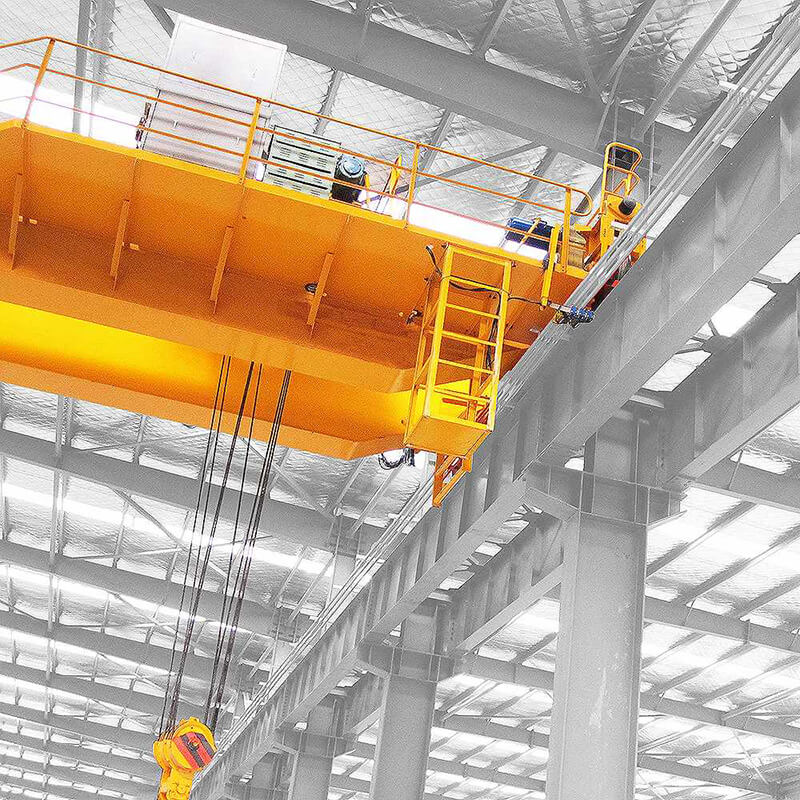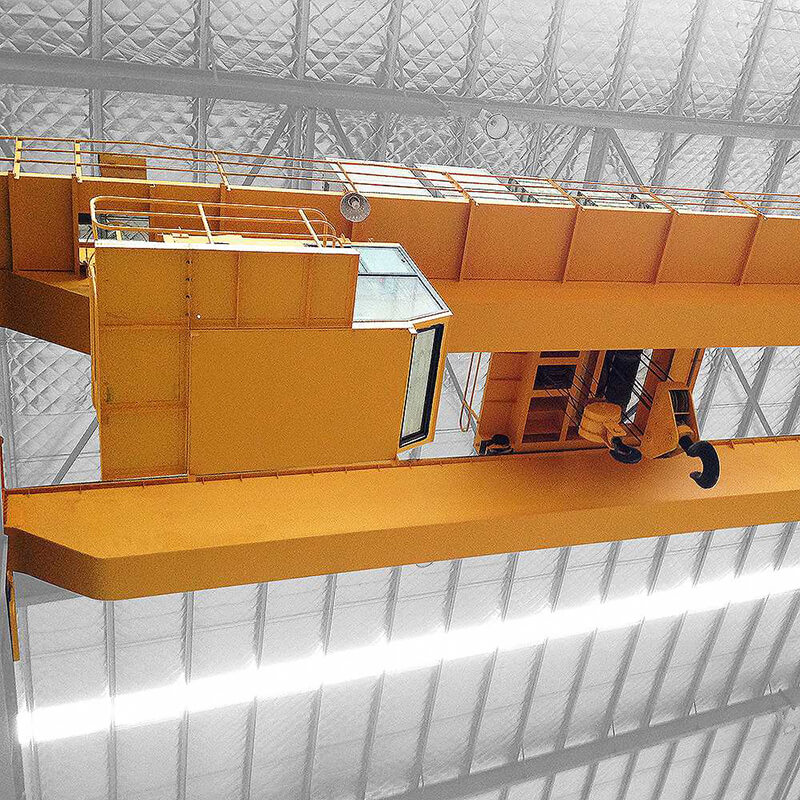Crane performance parameters
1. Rated lifting capacity Gn
The rated lifting weight is the sum of the materials that can be lifted by the crane together with the mass of the detachable spreaders or attachments (such as grabs, electromagnetic chucks, balance beams, etc.).
2. Total lifting weight Gz
The total lifting weight is the total mass of the materials that can be lifted by the crane, together with the separable spreaders and the spreaders and dramas (including hooks, pulley blocks, lifting wire ropes and other lifting objects below the lifting trolley) fixed on the crane for a long time. .
3. Effective lifting weight Gp
The effective lifting capacity is the net mass of the material that can be lifted by the crane.

Crane considerations
(1) Each crane must be hung with a sign of its rated capacity in a conspicuous place.
(2) During work, no one is allowed on the bridge or transporting people with hooks.
(3) Cranes are not allowed to drive without an operating license and after drinking alcohol.
(4) The operation must be concentrated, no talking, smoking or doing irrelevant things.
(5) The car must be clean and clean; no equipment, tools, flammable, explosive and dangerous materials are allowed to be placed indiscriminately.
(6) The crane is not allowed to be used with overload.
(7) Lifting is not allowed in the following situations: loose binding; overloaded machinery; unknown signal; oblique pulling; objects buried or frozen in the ground; people on the objects to be hoisted; inflammables and explosives without safety protection measures And dangerous goods; liquid objects that are too full; the wire rope does not meet the requirements for safe use; the lifting mechanism is faulty.
(8) When the crane is running on the line without obstacles, the hook or spreader and the bottom surface of the hanging object must be at least 2m above the ground. If you cross the obstacle, it must exceed the obstacle by 0.5m.
(9) For lifting objects less than 50% of the rated lifting weight, two mechanisms are allowed to operate at the same time; for lifting objects greater than 50% of the rated lifting weight, only one mechanism can operate.
(10) For bridge cranes with main and auxiliary hooks, do not raise or lower the main and auxiliary hooks at the same time (special exceptions).
(11) Welding or hammering on the hoisted object and working under the object are not allowed (supported).
(12) The inspection or maintenance work must be carried out only after the power outage and the power outage operation sign is hung on the switch door. If it is necessary to work on electricity, it must be protected by safety measures and has a dedicated person to take care of it.
(13) It is not allowed to throw things down from the car casually.
(14) Limit switches and interlock protection devices should be checked frequently.
(15) It is not allowed to touch the limit switch as a method of stopping.
(16) When there is a problem with the lifting brake, it is not allowed to lift heavy objects.
(17) Hanged objects are not allowed to run over people or equipment.
(18) When welding a certain part of the crane, it is necessary to set up a ground wire, and it is not allowed to use the fuselage as a ground wire.
(19) When the hook is in the lower limit position, there must be more than two safety loops on the reel.
(20) The cranes are not allowed to collide with each other, and it is not allowed to use one crane to push another crane to work.
(21) When lifting heavy objects, liquid metal, explosive and dangerous goods, you must first slowly lift 100~200mm from the ground to test the reliability of the brake.
(22) The voltage of the lighting lamp used for repair and inspection must be below 36V.
(23) All electrical equipment shells of bridge cranes should be grounded. If the trolley track is not welded to the main beam, the ground wire shall be welded. The grounding wire can be galvanized flat iron with a cross-sectional area greater than 75mm2 or bare copper wire with 10mm2 or galvanized round steel with a cross-sectional area greater than 30mm2. The grounding position of the driver's cab or crane body should be more than two. The grounding resistance from any point on the crane to the neutral point of the power supply should be less than 4Ω.
(24) Regular safety technical inspections and pre-inspection and pre-repair work should be done.

Crane factory maintenance
1. Before leaving the factory for hoisting equipment, make an identity record. Safety inspection and maintenance before equipment installation: check the integrity of the performance of the main mechanisms of the equipment, check the visible defects of the main steel structure and joints and their pins and bolts, check the anti-corrosion condition of the equipment surface, make records, and issue installation opinions.
2. The hoisting equipment is maintained by dedicated personnel. After the equipment is delivered to use, the daily maintenance shall be the responsibility of the equipment operator or the full-time personnel of the user unit, and the installation and maintenance unit shall have the obligation to supervise and inspect the contents of the daily maintenance. The main content of daily maintenance is summarized as "cross operation method": cleaning, tightening, lubrication, adjustment, and anti-corrosion.
3. Regular professional physical examinations should be carried out for lifting equipment. Regular inspection and maintenance during the use of the equipment: several maintenance and repairs to the mechanical equipment within the specified time, focusing on cleaning, lubricating, adjusting, dismantling, and overhauling. It is usually done by maintenance personnel and operators together.
没有评论:
发表评论